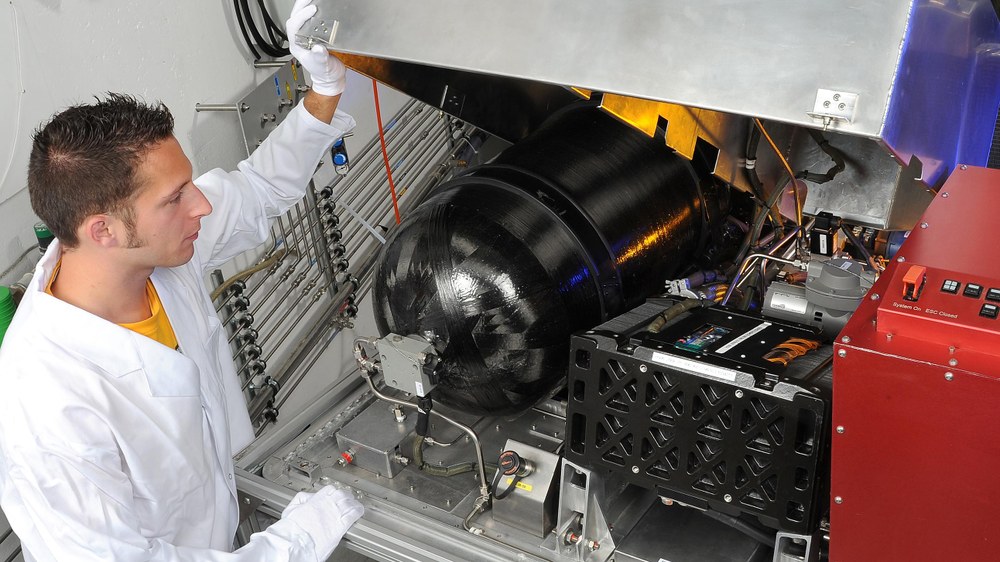Transporting, storing and distributing hydrogen



Together with production, cost-effective and reliable transport will be a key factor in realising a hydrogen economy. This involves both transport from global sites of production to nodes within customer countries and local distribution to end consumers. There are a number of possible approaches to transportation; hydrogen can be liquified, converted into ammonia or methane, or bonded to liquid organic hydrogen carrier molecules and then transported much like crude oil. At the moment it remains unclear which of these approaches will prove the most economically attractive.
The gradual conversion of the natural gas network into a hydrogen network is another possibility. The German gas network consists of a 40,000-kilometre transport grid and a distribution system covering 470,000 kilometres. This network is in some ways already suitable for distributing hydrogen. However, if a high proportion of hydrogen were to be introduced, materials, components, operating processes and user requirements would all have to be carefully investigated and optimised.
Large-scale storage facilities will be an essential part of the overall hydrogen infrastructure. It is not possible to store electrical energy in the required capacity range, but large hydrogen storage systems can be used to reliably cover seasonal peaks in demand, such as the start of the heating season or during the darker months. Underground storage in salt caverns is considered to be particularly suitable for this purpose in Germany, so DLR is examining the safety, durability of materials and quality of hydrogen extracted from such storage facilities.
Example project:
HyCavMobil© – The storage of hydrogen in salt caverns and its subsequent use in fuel cell mobility are being studied and evaluated in the HyCavMobil (Hydrogen Cavern for Mobility) project.
